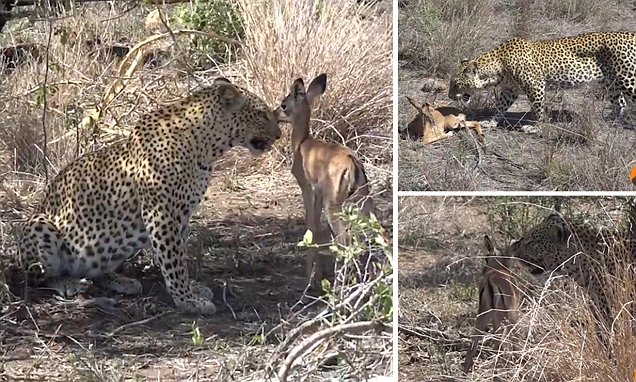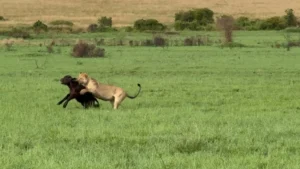Animals never stop astonishing us with their complexity, emotions, and unexpected behaviors. We often think of predators as ruthless hunters and prey as helpless victims — but nature sometimes tells a very different story. One such extraordinary moment unfolded in South Africa’s Greater Kruger National Park, where a leopard seemed to show compassion toward an orphaned baby impala instead of killing it. This heartwarming and puzzling encounter left tourists speechless and wildlife experts debating what really happened.
A Shocking Scene in Kruger National Park
It started like any typical predator-prey encounter. A tourist on safari captured footage of a leopard charging at a defenseless baby impala — a medium-sized African antelope known for its speed and agility. Alone and without its mother, the young impala seemed destined to become the big cat’s next meal. Everything about the situation suggested a tragic ending.
But then, something extraordinary happened.
Instead of delivering the fatal blow, the leopard suddenly stopped. It didn’t attack. It didn’t pounce. Instead, it appeared to engage with the impala in a completely unexpected way — playing, chasing, and interacting gently as though it were a companion rather than a meal.
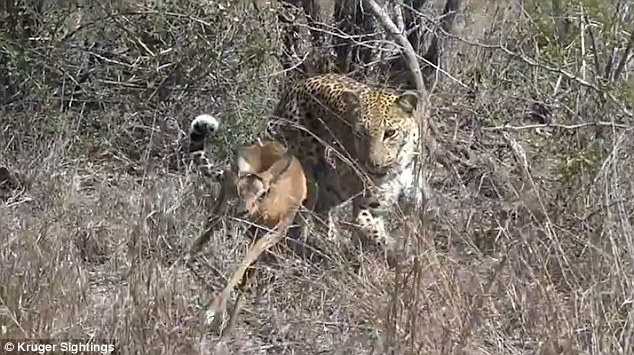
Predator and Prey — Or Unlikely Friends?
The tourist continued filming as the two animals ran around together in the tall grass, the fear and aggression one might expect replaced by something else entirely. Eventually, the leopard lay down beside the impala, and the two rested peacefully together. At one point, the young antelope even approached the leopard and rubbed its small face against the predator’s, a behavior that seemed more affectionate than fearful.
For the onlookers, it was almost too surreal to believe. In the world of wild animals, predators and prey don’t share moments like this — yet here they were, side by side, defying nature’s usual script.
👉 Read more inspiring wildlife stories: Full Story: Man Loses 360 Pounds Naturally — Internet Rallies to Support His Next Step
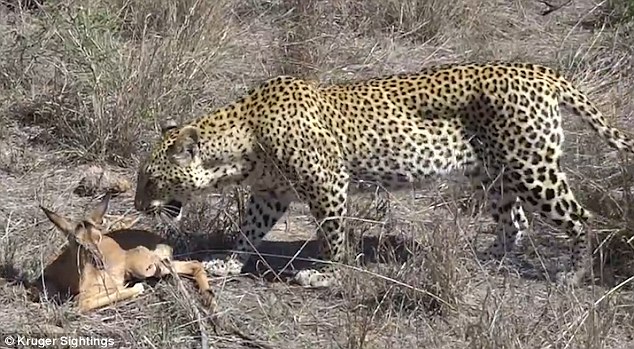
Nature’s Mystery: Compassion or Instinct?
The footage quickly went viral, sparking a wave of debate among viewers and wildlife experts. Was the leopard showing compassion, or was it simply “playing with its food,” as some suggested? Many observers compared the behavior to that of domestic cats, which often toy with their prey before delivering the final bite.
Some viewers pointed to specific behaviors — such as the leopard’s gentle head-butting — as signs of social bonding. “That head bump is a cat’s social greeting,” one commenter noted, suggesting the leopard wasn’t viewing the impala as prey at all. Others were more skeptical, arguing that the predator was simply waiting for the right time to strike or for the impala to grow larger before eating it.
This debate reflects a deeper truth about life in the wild: animal behavior is often more complex than we imagine. While survival and instinct drive most actions, moments like this suggest that emotion and curiosity may also play a role.
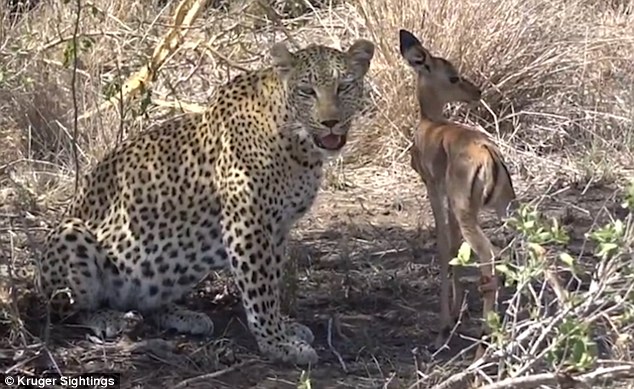
Rare Cases of Predator Compassion
This isn’t the first time predators have behaved in ways that defy their usual roles. In 2002, a lioness in Kenya famously adopted several baby oryx — even mourning the death of one when it was eventually killed by another predator. Such incidents, though rare, offer a glimpse into the emotional depth and adaptability of wild animals.
Scientists have long documented instances of animals forming unexpected bonds, even across species lines. Sometimes, it’s due to maternal instincts triggered by the sight of a young, vulnerable animal. Other times, it might be simple curiosity or a temporary behavioral response to an unusual situation.
Regardless of the explanation, these rare events reveal that nature is far more nuanced — and far less predictable — than we often give it credit for.
The Ending Nobody Knows
The footage ends with the leopard and impala resting together, an image so peaceful and strange that it feels almost magical. But as with many wildlife stories, the ending remains uncertain. According to the website Kruger Sightings, which shared the clip, the tourist had to leave the area, and when they returned the following day, there was no sign of the baby impala.
The site speculated that the story likely ended the way nature usually does — with the impala falling victim to the predator. Yet, even if the ending was inevitable, the brief interaction offered a rare and moving glimpse into another side of animal behavior.
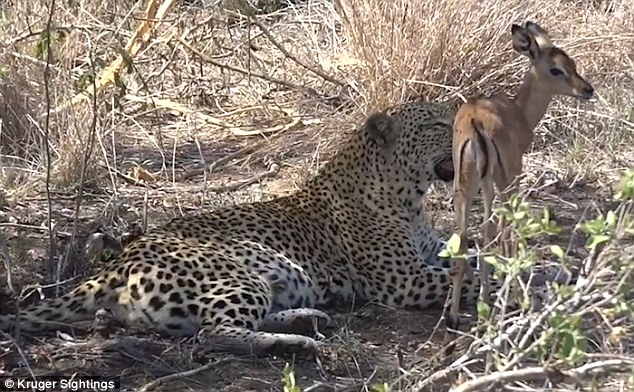
What This Story Teaches Us
Whether the leopard truly “adopted” the impala or was merely curious, the encounter carries powerful lessons about nature and the stories it tells. It reminds us that even in the brutal world of predator and prey, moments of gentleness and unpredictability can emerge. It also shows how our assumptions about animal behavior — especially around emotion and empathy — are often incomplete.
For scientists, such events are valuable opportunities to study animal psychology and social behavior. For the rest of us, they’re deeply emotional moments that challenge how we think about nature.
👉 Read next: The Hidden Meaning Behind Princess Diana’s Cannes Gown – A Heartfelt Farewell to Grace Kelly
Final Thoughts: The Wild Is Full of Surprises
In the end, this incredible encounter is a reminder that animals are far more than instinct-driven creatures. They are capable of behaviors that surprise, inspire, and even touch our hearts. Whether the leopard was driven by maternal instincts, curiosity, or something else entirely, the moment it paused its predatory nature to interact with a vulnerable impala remains unforgettable.
This story also underscores a larger truth about the natural world: it’s full of mysteries that science has yet to fully explain. From predator-prey friendships to cross-species adoptions, every new discovery deepens our understanding of the planet we share.
And perhaps that’s the most important lesson of all — nature isn’t just about survival; it’s about connection, complexity, and the beautiful unpredictability of life on Earth.
